Want to learn about how to care for Pets?
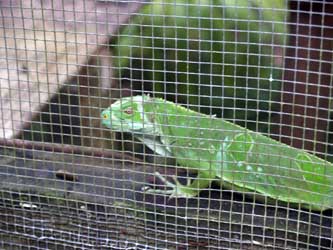 Extend your knowledge and capacity to care for all types of pets.
Extend your knowledge and capacity to care for all types of pets.
A sound introduction to caring for a wide variety of different of different pets. Covers dogs, cats, fish, birds, rabbits, rodents, reptiles and amphibians. The course was developed and is tutored by highly qualified and experienced professionals including Veterinary Surgeon,s a former wildlife park manager, and university lecturers. This course is a great introduction to the care of a wide variety of different pets.
ACS Student Comment: "Undertaking research reinforces learning, and it makes me learn more than I would on the course notes alone. The tutor’s comments are very useful. He also provides links to interesting materials relative to my course." Lana Hurley, Australia - Pet Care course.
COURSE STRUCTURE
There are eight lessons in this module as follows:
1. Introduction to Animal Care
- Laws and licenses
- Animal Charities and Societies (eg. RSPCA, WSPA, Blue Cross)
- Pet Care Needs (feeding, Watering, Shelter, Containment, Fencing, Caging, Protection)
- Maintaining Health
- Hygiene
2. Cats
- Breeds (Lang Haired, Semi Long Haired, Short Haired, Oriental etc)
- Selection
- Allergies
- Containment
- Sexing
- De-sexing
- Breeding
- New-born Kittens
- Exercise
- Behaviour
- Hygiene
- Feed and nutrition
- Amount of food
- Watering
- Grooming
- Travelling
- Care for a sick cat (Signs of illness, Temperature, Common ailments, Skin disorders, Ticks)
- Cats and wildlife
3. Dogs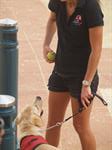
- Selection
- Breeds (Pure and mixed)
- Varying size and temperament
- Grooming
- Skin care
- Inherited traits (aggression, deafness)
- Containment
- Breeding
- De-sexing
- Exercise
- Behaviour
- Feeding
- Canine Nutrition
- Bones
- Watering
- Training
- Travelling
- Identifying sickness
4. Birds
- Selection, Breeds (eg. Canaries, Finches, Budgerigars, Small Parrots etc)
- Sexing
- De-sexing
- Containment (Aviaries, selection, design, size, management)
- Feed
- Feeding
- Watering
- Grooming (Wing trim, Beak Trim, Nail Trim)
- Hygiene
- Catching and Restraining
- Travelling
- Caring for the Sick Bird
- Signs of illness
- Temperature
- Supportive therapy
- Common Ailments (eg. Abscesses, Alopecia, Apoplexy, Aspergillosis, Breathlessness, Constipation, Parasites)
- Safety in the Home
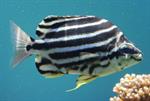 5. Fish
5. Fish
- Selection
- Inside or Outside
- Warm or Cold water
- Number of fish
- Types of fish (Tropical, Marine, Cold Water)
- Costs, Size, Equipment
- Tanks, Ponds, Pumps, Aquariums, Night lights
- Water quality
- Changing Water
- Feed (Pelleted, live feed –Daphnia, Brine Shrimp)
- Illnesses (Fungal, Bacterial, Parasites, Environmental)
6. Rabbits
- Breeds (Large, Small and Dwarf)
- Selection
- Legality (Illegal in some areas)
- Containment (Hutch or Cage)
- Environment (temperature etc)
- Feeding and Nutrition
- Watering
- Feed quantities and routine
- Grooming and Handling
- Moulting
- Transporting
- Sexing
- Breeding
- Identifying illness
- Care of sick rabbits
7. Reptiles and Amphibians
- Types (eg. Salamander, Frogs, Venomous snakes, Non-venomous snakes, Shingle-backed lizard, Tortoises, Terrapins, Axolotls, etc)
-
Selection
- Legal Issues
- Housing
- Environmental requirements (Moisture, Humidity, Warmth, etc)
- Terrariums
- Problems (eg. Dehydration, Stress, External and internal parasites, Blisters, Scale Rot, Mouth Rot or Canker, Colds/pneumonia, Constipation and diarrhoea, Cannibalism, Incomplete sloughing of the skin -shedding of the skin)
-
Feed and feeding
- General Care
8. Rodents, Guinea Pigs, Hamsters, Mice
- Varieties
- Selection
- Containment
- Sexing
- Breeding
- Grooming
- Feeding
- Watering
- Illness (eg. Skin Problems, Abscesses, Mites, Ringworm, Fleas, Respiratory Infection, Vitamin C Deficiency, Otitis, Salmonella, Stripping etc)
WHAT YOU WILL DO IN THIS COURSE
Some of things you can expect to do in this course:
- Learn about the needs and requirements for different pet types
- Understand the importance of selecting the appropriate pet
- Compare and contrast breeds and understand that different breeds have different needs
- Investigate animal groups, fanciers, refuges and charitable organisations and other contacts in your area
- Determine the best pet for different people/homes/locations
- Know how to sex animals
- Learn about the nutritional requirements of different pets
- Investigate enclosures, fencing and shelter for different pets
- Develop a husbandry timetable for the care of particular pets
- Recognise the signs of illness in pets
- Develop check lists of things to be done to ensure the health and happiness of pets
- Compare the requirements and restrictions for keeping different types of animals as pets in your locality
- Learn about basic breeding, and investigate the ethical and legal issues regarding pet breeding
- Understand the importance of de-sexing and when it should be done
- Discuss grooming and its importance in long haired pet breeds
- Recognise the responsibilities of owners to the care and health of their pets
- Consider exercise and companionship needs of different pets
- Learn about basic hygiene needs of pets and how to meet them
- Understand the problem of obesity in pets
- Observe the behaviour of different pets
- Compare temperament, congenital diseases and other traits between pure and mixed breed pets
- Understand the grooming and care requirements of birds
- Learn about pet transportation
- Consider dangers to pets in homes and yards
- Understand the requirements for more complex animal enclosures such as aquariums and terrariums
- Discuss the differences between guinea pigs, hamsters and mice
COURSE AIMS
This course is designed to give students a comprehensive understanding of the care requirements of pets. From selecting the best pet for different situations and environments, to ensuring adequate space, comfort, shelter and containment, maintaining health and providing proper diet and exercise and identifying symptoms of illness and providing supportive care, students will be prepared to care for their own pets, or work with animals, in refuges, charitable centres, pet stores, and similar positions.
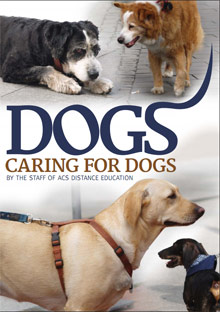 RECOMMENDED READING
RECOMMENDED READING
Staff at the school have written an eBook to complement this course.
Caring for Dogs by John Mason and Staff of ACS Distance Education is a stand alone book that is a valuable reference, whether you study this course or not.
You can see an outline, download some sample pages and if you wish, purchase the book at http://www.acsbookshop.com/products/2269-dog-health.aspx
__________________________________________________________________
WHAT HAPPENS IF A DOG DOESN'T GET ENOUGH ATTENTION?
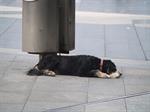 Certain behaviours are associated with dogs not receiving adequate attention.
Certain behaviours are associated with dogs not receiving adequate attention.
These types of unwanted behaviours are all designed to gain the dog owners attention. They may occur for a variety of reasons; the dog may be left on its own for long periods of time or they may suffer from being continuously ignored by their owners. The behaviours may be inadvertently be ‘re-enforced’ by their owners and eventually lead to seriously ingrained behavioural problems. For example, a dog keeps barking, and the owner comes in and starts to play with him every time he barks. This will reinforce and encourage the behaviour as the dog will think “I will bark and she will come and play with me.”
- Examples of attention seeking behaviour include:
- Barking
- Whining
- Vomiting
- Jumping up on people
- Feigning lameness
- Abnormal body posturing
- Fixating on objects (eg a toy or ball)
These types of problems can be treated by completely ignoring the behaviours when they occur. It is vitally important to be consistent; if the unwanted behaviour provides the dog with the attention that it is seeking even occasionally, the cycle will be much harder to break.
Other things to consider when treating these types of problems is to ensure that the dog is having sufficient levels of exercise, optimum nutrition and enough mental stimulation through play and appropriate attention from their owner.
Excessive Barking
Barking when excited or in defence of a territory is quite natural in dogs, however, dogs that are bored will bark all day and this is not healthy. This type of barking is a sign of unhappiness, loneliness and boredom. Unfortunately, consistent barking can become a behaviour pattern for the animal. Once this type of barking has become a habit, the dog will require training to control the barking. Owners should consult a veterinary expert for advice on the best training method. This training will require patience, consistency and rewards for good behaviour. Going hand in hand with this training is to deal with the reasons for the barking. Bored dogs may require a more stimulating environment and much more exercise. When a dog is tired, it is much less likely to bark when bored. Toys are also a good way to keep your dog occupied when you are not there.
Regular exercise for bigger dogs such as walking is a great way to relieve boredom. Smaller dogs do not necessarily need to be walked every day but do crave companionship. If you can take the dog with you sometimes when you go out they will benefit immensely.
Dog Fact
Wolves were once the most widely distributed land predator the world has ever seen. The only places they didn’t thrive were in the true desert and rain forests.
Chewing
Chewing is a natural action for all dogs; however chewing can quickly become a problem if your dog causes destruction.
The most common reasons dogs chew are:
- teething
- boredom and/or excess energy
- anxiety
- curiosity (especially puppies)
Encourage your dog to chew on the right things by providing plenty of chew toys. Keep personal items away from your dog. When you are not home, keep your dog crated or confined to an area where less destruction can be caused. If you catch your dog chewing the wrong thing, quickly correct him with a sharp noise. Then, replace the item with a chew toy. One of the most important things you can do is make sure your dog gets plenty of exercise.
Running Away
Some dogs may run away. They may try to escape from the garden or run off as soon as they are let off the lead in the park. There are obviously solutions – ensure the garden is secure and the dog cannot escape or use an exercise pound or similar. Or keep them on the lead when they are out working. These are obvious solutions, but do not obviously cure the “running off” behaviour. A dog may run off because it thinks it is fun or it sees something interesting, like a squirrel. A dog should be rewarded for coming to their owner. If a dog runs off, finally the owner catches it and tells him off. This is not going to encourage the dog to come back next time.
The owner can encourage a dog to come back when called with simple exercises. A simple treat like a dog biscuit or nibble can be used. In the home, the owner can call the dog. As soon as the dog comes, the owner gives a treat. This is repeated over and over until the dog always comes when called – straight away – not twenty minutes later when the dog feels like it. Then the owner can move into the garden, do the same, call the dog, then praise with a treat. Ensure that they cannot escape while this is happening. When the dog consistently comes back when called, the owner might try a more open space, like a park or field. If the owner does not fully trust the dog, they may put them on a long road or lead. But do the same, call the dog, then reward when he returns.
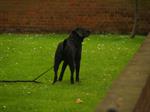 Eventually the dog will learn that returning to their owner is a pleasurable experience. This may take time, depending on how much the dog likes to run off, but it will eventually learn. If there is a blip, when the dog has come back many times, but then suddenly will not, it could be due to something else, such as a new dog in the field that they do not recognise. But the owner should continue to reward the dog with return-reward. This is important, as other people and animals do not want dogs running over to them and generally making a nuisance of themselves. So only well trained dogs should be allowed off their lead in public spaces.
Eventually the dog will learn that returning to their owner is a pleasurable experience. This may take time, depending on how much the dog likes to run off, but it will eventually learn. If there is a blip, when the dog has come back many times, but then suddenly will not, it could be due to something else, such as a new dog in the field that they do not recognise. But the owner should continue to reward the dog with return-reward. This is important, as other people and animals do not want dogs running over to them and generally making a nuisance of themselves. So only well trained dogs should be allowed off their lead in public spaces.
Chasing moving objects
Some dogs may chase moving things, like cars, bicycles, runners. This can be dangerous for the dog – they may be run over or fallen on. And it can be dangerous for the person involved. They may swerve to avoid the dog, fall over them etc. So dogs that chase things should be kept under serious control and made to be aware that this is not acceptable. A dog that does chase can follow the same steps as a dog that runs away, but they may need to be kept on their lead for a longer period to ensure that the chasing behaviour does not continue.
Begging
This is a bad habit, that is usually made worse by owners as once a dog is given food it will reinforce this behaviour. It can lead to digestive problems and obesity. In a pack setting, a subordinate would never beg from alpha dogs without reprimand. When you teach your dog that begging is permitted, you jeopardise your role as pack leader. Before you sit down to eat, tell your dog to stay, preferably where he will not be able to stare at you. If necessary, confine him to another room. If he behaves, give him a special treat only after you and your family are completely finished eating.
Digging
Dogs will often dig when bored. They will also try to dig to escape, cool down, bury bones, following a strong scent (such as fertilizer) or to fashion a den of sorts. The best way to deal with this behaviour is to understand it and manipulate it in such a way that it does not distress the owner. Things you can do to redirect this energy is to:
- Provide a spot that they are allowed to dig in and train them to dig there. This might be a small sandpit.
- Make no-go zones more undesirable by adding scents which are unappetising (such as pepper)
- Provide more appropriate exercise such as fetch, walking and swimming to release energy
Again you will need to be consistent and patient with your training.
Separation Anxiety
This is one of the most common problems. Behaviours include vocalisation, chewing, inappropriate urination and defecation and other forms of destruction that occur when a dog is separated from his owner.
Signs of true separation anxiety include:
- dog becomes anxious when owner prepares to leave
- misbehaviour occurs in the first 15-45 minutes after owner leaves
- dog wants to follow owner around constantly
• dog tries to be touching owner whenever possible
True separation anxiety requires dedicated training, behaviour modification and desensitisation exercises. Medication may be recommended in extreme cases but this should be a last resort.
ENROL AND LEARN MORE